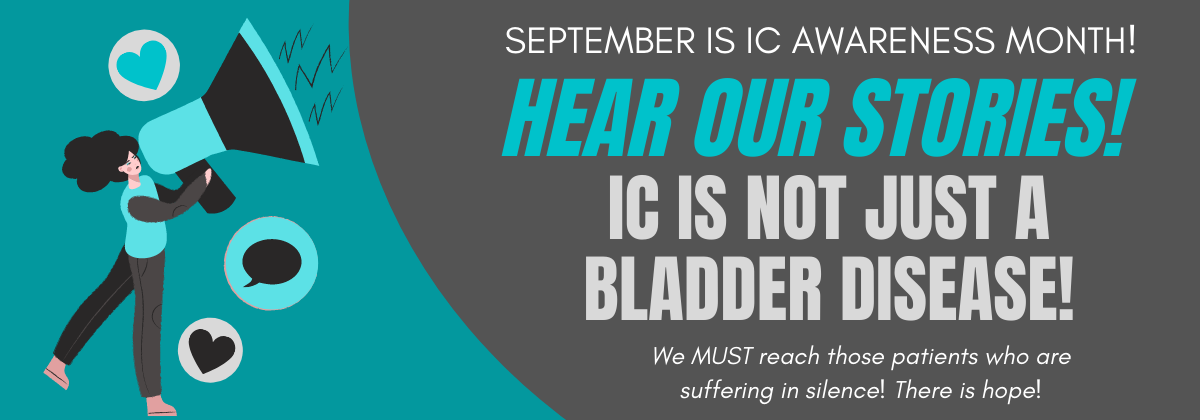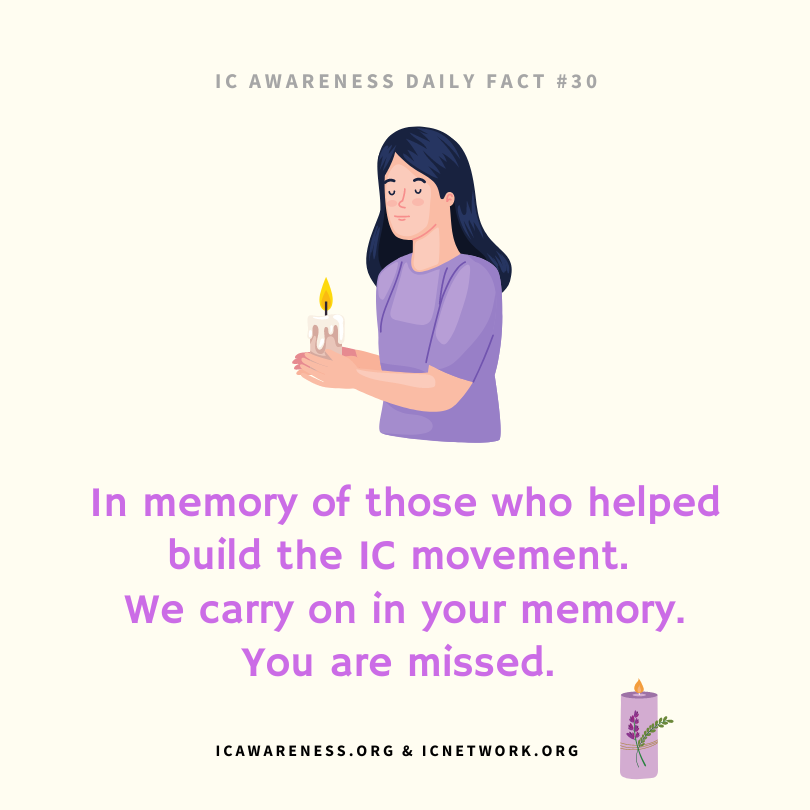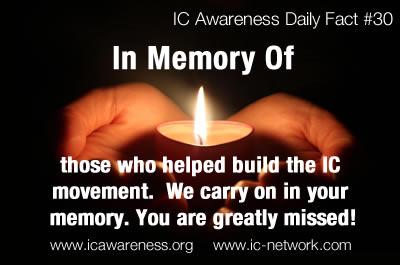On this, the last day of IC Awareness Month, we honor those patients and providers who are no longer with us. Many helped the IC movement become this vital, vibrant community. Daniel Brookoff MD was the first doctor who advocated for the aggressive and compassionate treatment of the pain of IC. C. Paul Perry MD, a co-founder of the International Pelvic Pain Society, who helped to create the first professional organization dedicated to the relief of pelvic pain.
Taken far too soon, we honor IC group leaders Evelyn White (IC-Redwood Empire), Michaeleen Franklin (Tucson IC Support Group) and Diane Manhattan (co-founder of the IC Network Support Forum).
And to the many patients who, through no fault of their own, suffered indignity after indignity because IC was not recognized during their lifetime. We acknowledge their struggles, their pain and their difficulties finding health care. Young and old, single and married, we lost you far too soon! We will continue to try, every day, to honor your memories.
One hundred years ago, IC was barely recognized as a medical condition. Patients were often suspected of having bladder stones or tuberculosis in the bladder.
Seventy years ago patients with IC were often sent to mental hospitals out of the mistaken perception that IC was a mental disorder. They, too, often lived in despair.
Forty years ago, patients with IC found a sanctuary in the first organized support groups in the United States, Canada and England. But many still were told that it wasn’t real and were denied care.
Thirty years ago, the first website and online support group (The Interstitial Cystitis Network) was created for IC patients. Many new therapies were under development, including Elmiron. Patients began to feel hope.
Twenty years ago, more IC patients received a prompt diagnosis. The IC research movement was thriving. The first supplements were created that provided hope for patients who lacked access to traditional health care or who could not afford treatments.
Eleven years ago, new diagnostic and treatment guidelines were passed in Europe, Japan and the USA which created new, consistent treatment plans that have helped millions.
Ten years ago, the ESSIC society was the first to recognize distinct patient groups. The UPOINT system was also created to provide a comprehensive whole-body diagnostic workup.
Five years ago, Dr. Christopher Payne proposed five core subtypes for IC/BPS which has changed how we work with patients. Rather than focusing on symptoms, we now work to identify the underlying cause, whether it be Hunner’s lesions, estrogen atrophy, chronic infection (viral, fungal or bacterial), pelvic floor injury, pudendal neuralgia and central sensitization.
Today, new guidelines released by the American Urology Association state that IC is no longer considered a bladder disease but rather a pelvic pain syndrome often with a neuromuscular origin. This helps us to understand why so many patients have not responded to bladder treatments. We now also understand the connection between IC, IBS, vulvodynia, TMJ, fibromyalgia, migraines and the other chronic pain conditions. It’s our central nervous system driving these chronic overlapping pain conditions. Treatment for these patients focus on calming nerves and reducing chronic “fight or flight” that is often found.
Let us continue the fight together! Speak out! Dare to be bold! Share your story!
THANK YOU to everyone who participated in this years campaign. – Jill H. Osborne, IC Awareness Month Leader & IC Network Founder
Tik Tok
@icnetworkjill iC Awareness Month Daily Fact 30 – We honor and thank those that we have lost. You are always in our hearts. Thank you for all that you have done! #ic #pelvicpain #bladder #icawareness ♬ original sound – IC Network
Recent Images


